*Magdolna Sinka1, István Barcs1, Gyula Domján1, Zsuzsanna Kiss Soósnè2
Views of students of public health inspector training on further studies and employment opportunities
1Department for Epidemiology, Institute for Health Promotion and Clinical Methodology, Faculty of Health Sciences, Semmelweis University, Budapest, Hungary
Head of Department: Istvan Barcs, PhD
2Department of Clinical Study, Institute for Health Promotion and Clinical Methodology, Faculty of Health Sciences, Semmelweis University, Budapest, Hungary
Head of Faculty: Professor Nagy Zoltán Zsolt, MD, PhD
Summary
Introduction. The education of public health controllers – formerly public health and epidemiology supervisors and earlier public health and epidemiology controllers – has a history of more than 60 years. The graduates had relatively limited opportunities to continue professional training after graduation until the introduction of the Bologna educational system. They were mostly employed in the public sector and worked for authorities. Now that Hungarian higher education has been transformed after the pattern of the “Bologna process”, it offers several opportunities for the graduates for further studies in their fields.
Aim. The aim of the authors is to assess, analyse and summarize the plans of students who participated in the public health controller training of the Health Care Faculty of SemmelweisUniversity in the 2012/2013 academic year for the continuation of their studies and for finding employment in the professional field they have majored in, with a view to their choice between the public and the private sphere as well.
Material and methods. The population of the survey consisted of the students who had an active status in the second semester of the 2012/2013 academic year at the Health Care Faculty of Semmelweis, training to be public health controllers. Information was collected through questionnares.
Result. 52% of the students are planning to continue their studies in the field they have been studying in. The largest section of them, 46.2% would like to find employment in the public sector. 72.4% of the students surveyed would like to find employment in the field corresponding their present studies: 35.9% would like tobeemployed at the Public Health Administration Institution at the time of the survey,10.3% at the National Food Chain Safety Office (NÉBIH) and 20,5% in the private sphere.
Conclusion. The commitment of the students to the field they have been studying can clearly be seen both among those who are planning to continue their studies and also concerning the employment they are planning to find. The students participating in the survey are not typically planning to find employment abroad. Among those planning to find employment in Hungary the majority would prefer the public sector over the private sector. The opportunity to find employment at the public health authorities continues to be dominant for the students.
Introduction
Public health inspector, formerly called public health-epidemiological supervisor and public health-epidemiological inspector before that, was one of the first medical professions to be introduced as a college degree. For a long time, the only institution in Hungary who provided professional training in full-time, part-time and other forms was the predecessor institution of the present Faculty of Health of the Semmelweis University in Budapest. In the years 1978-2013, a total of 3252 students obtained a degree in public health (1). Before the introduction of the Bologna education system, only few options for the further education were available for the college graduates. There is also no precise data concerning the number of the students and fields in which they had pursued their education and career. As the professional training for public health specialists has been introduced after the reorganization of the Hungarian higher education system according to the Bologna system (2), more options are now available for the graduates.
Aim
The aim of the study was to assess, among others, whether the current students of public health inspector training take these opportunities and, if so, to what extent. After the transitionhte demand gradually rose in the private sector for new graduates in healtcare. Furthermore, we aimed to survey what views the students have regarding their own professional field and the perspectives of employment in state and private sectors after their graduation.
The study summarizes the opinions of students who actively studied public health inspection during spring semester in the academic year 2012/2013. Therefore, the results cover this period and cannot be generalized.
Material and methods
Data was collected primarily with the help of a questionnaire, the filling in of which was voluntary. As conserving anonymity was of prime importance to us, the questionnaire did not include any questions or answers which could help to identify the students who completed it. The majority of questions were multiple-choice, in some questions, more than one answer was allowed and such possibility was marked. The self-developed questionnaire included, among others, socio-demographic data (age, gender, etc.). To analyze the data, descriptive, statistical, and mathematical methods were applied. The data analysis, tables and graphs were prepared using the SPSS 19.0.0 software, Office 2010 suite was used for word processing, and Excel 2007 – for preparing additional graphs. For categorical variables, total sample size (N) and frequency (%) were calculated and for continuous variables, number of data points, mean, standard deviation, 95% confidential interval, minimum and maximum were calculated. The significance level of the examined hypotheses was confirmed with Fisher’s exact test for two by two tables, and, for data sets larger than that, the chi-squared test was used. If the expected number of data points fell below N = 5 in any cells of the contingency table, the variables were aggregated in fewer categories until the expected number of data points in each cell was at least 5 persons or the contingency table measured two by two cells.
Results
Socio-demographic data
During the survey period, the total number of students in public health inspector training was 297 persons – 190 in full-time and 107 in part-time studies. 220 full-time students (74.07% of all full-time students) completed the survey. Table 1 shows the characteristics of students who filled in the questionnaire divided by their type of education and year of studies.
Tab. 1. Characteristicsof the public-health inspector students surveyed
| Type of education | Year | Number of students | % |
Full-time course | 1 | 60 | 44% |
| 2 | 22 | 16.4% |
| 3 | 31 | 23.1% |
| 4 | 21 | 15.7% |
| Total | 134 | 100% |
Part-time course | 1 | 24 | 27.9% |
| 2 | 15 | 17.4% |
| 3 | 26 | 30.2% |
| 4 | 21 | 24.4% |
| Total | 86 | 100% |
Mean age of all the students surveyed was 26.06 years. The youngest person was 18 years old and the oldest 58 years old (tab. 2).
Tab. 2. Age distribution of the students surveyed, the youngest, the oldest
| N | Mean | Standard deviation | 95% Confidential interval | Minimum | Maximum |
| Min. threshold | Max. threshold |
| 216 | 26.06 | 8.415 | 24.94 | 27.19 | 18 | 58 |
Table 3 summarizes gender distribution for the studentssurveyed. 89.3% of the respondents were female, 10.7% – male.
Tab. 3. Gender distribution of the public-health inspector students surveyed (full-time and part-time students)
| Gender | N | % |
| Male | 23 persons | 10.7% |
| Female | 192 persons | 89.3% |
| Total | 215 persons | 100% |
| Missing value | 5 persons | |
Based on our results, we can conclude that the number of female students was higher both in part-time and full-time training classes.
Views on further education after graduation from the current studies
As shown in figure 1, more than half of the students surveyed (52.3%, 114 persons, N = 220) planned to continue their studies in an area connected with their current study field after graduating. 32.6% (71 persons, N = 220) were uncertain about their further education, and 15.1% (33 persons, N = 220) did not plan to continue their studies.
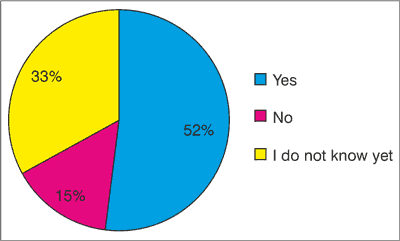
Fig. 1. Plans for further education connected with current study field
As shown in figure 2, most of the students who did intend to pursue their education wanted to do it in Hungary (84.2%, 96 persons; N = 114). Only a small percentage of students (2.6%, 3 persons) would like to continue their studies abroad. 13.2% (15 persons) of the students who planned further education had not decided yet on the location of their further studies. Full-time students tended to choose the “I do not know yet” answer more often.
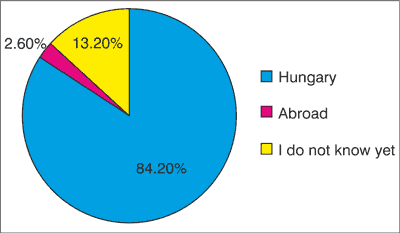
Fig. 2. Planned location of further education among students who plan to continue their studies
Figure 3 summarizes the planned field of their further studies. The highest proportion of students (54.4%; 62 persons) intended to continue their studies in a field related to their current studies, and only 34.2% (39 persons) would choose a “basic field”, i.e. the basic field of their current studies. 7.9% of the surveyed (9 persons) responded that they plan to continue their studies in a completely different area. The proportion of the uncertain respondents was very low (3.5%; 4 persons).
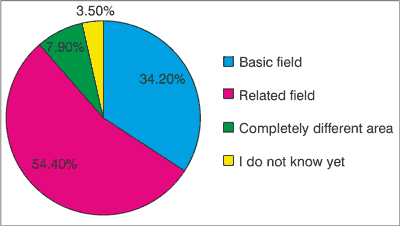
Fig. 3. Students who plan further studies after completion of the current studies with regard to the planned field
When evaluating the responses from part-time and full-time students separately, we observed that part-time students had chosen the “basic field” and the “related field” answers with a very similar frequency, however, the proportion of full-time students who chose the “related field” option was far higher than those who chose the “former field” option.
When asked what type of further education the students intend to pursue (part-time, full-time etc.), the highest proportion of the surveyed (57.8%, 66 persons; N = 114) answered that the part-time training type is their preferred type. 11.4% (13 persons) chose the full-time training type. The proportion of “uncertain” respondents was relatively high, with 20.7% (27 persons) (fig. 4).
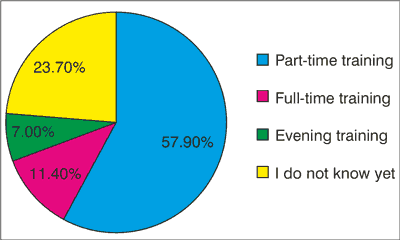
Fig. 4. Planned type of further education among students who plan further studies
When analyzing the responses of the full-time and part-time students separately, no difference could be found between the two groups and in both cases part-time type is preferred. It is not surprising that part-time students were less likely to choose the full-time option at the time of survey.
We also asked about the planned level of further education (fig. 5). The majority of respondents, 58.4% (66 persons) intended to continue their studies at the master level (MSc), and 15.0% (17 persons) aimed to earn a PhD degree. The “uncertain” respondents, 15 persons (13.3%), had no definite ideas yet about the level of their further education. 8% (9 persons) of those who intended to continue their studies chose a postgraduate specialization, only two students wanted to pursue vocational training.
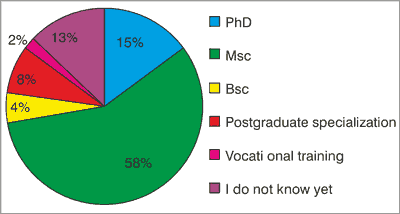
Fig. 5. Planned levels of further education among those who plan to continue their studies
When evaluating the results separately for the education form and class, we concluded that both full-time and part-time students had planned to pursue their education mainly up to the MSc degree. The proportion of students in the full-time course who were interested in the MSc degree is higher in the first and the fourth year and lower in the second and third year. This ratio was the highest in the fourth class, which is the final year of the studies. The intention of obtaining a PhD degree was present in both full-time and part-time students, but the percentage of students interested in earning a PhD was higher for the full-time students.
Ideas on access to employment after graduation
70.2% of the students surveyed already had a clear idea in which field they would like to seek employment after graduation. In this respect, there was no difference between the full-time and part-time students. 7.3% (16 persons) of the surveyed had not decided yet and had not thought about this, whereas 22,.5% (49 persons) had not decided yet because they had not had enough information. The results are shown in figure 6.
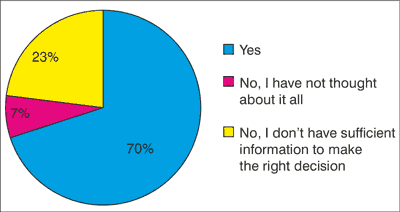
Fig. 6. Do you already have an idea in which field would you like to seek employment?
The proportion of students who already had had an idea of which field would like to seek employment is highest in the fourth-year students, regardless of the training form. Among the fourth-year full-time students, none of the students felt insufficiently informed. However, the ratio of students who felt insufficiently informed was higher among the full-time students.
At the same time, it is also interesting to note that only 5 full-time students answered that they had not thought about which field they would like to be employed, while the same answer was chosen by 11 part-time students.
We also aimed to investigate whether the students try to establish contact with their potential future workplace during their curriculum. 44.5% (97 persons; N = 218) of the students were not sure about it, and 43.6% of the students (95 persons) intended to establish such a contact. Only 11% did not intend to do so. The results are shown in figure 7.
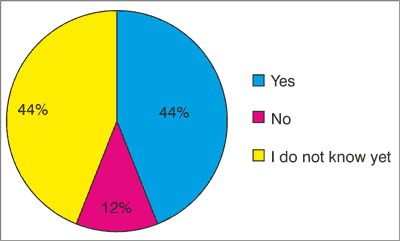
Fig. 7. Conception on establishing contact with the future workplace during the curriculum
The part-time students planned to contact with the future workplace more often than students attending full-time trainings. Full-time students also chose the “I do not know” answer more frequently.
We also assessed students’ conceptions on the planned site of work after passing the state examination (fig. 8). 72.8% of the students surveyed (158 persons; N = 217) planned to work in Hungary. Only 9.2% (20 persons) planned to work abroad and 18.0% (39%) had not decided about this yet.
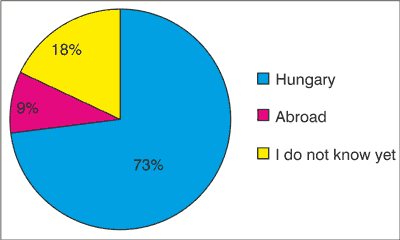
Fig. 8. Planned location of work after state examination
The proportion of “uncertain” students is relatively high among full-time students in this question – 33 persons (25%) – with only 6 persons (7.05%) of part-time students choosing the same option. A similar amount of full-time and part-time students planned to work abroad: 9 part-time students (10.58%) and 11 full-time students (8.3%)
We asked about the main motivation of students who wanted to work abroad (N = 20). The highest proportion of students (65%, 13 persons) planned to work abroad for financial reasons, 20% (4 persons) because of better working conditions and 15% (3 persons) for other reasons. Not a single student indicated the opportunity for professional improvement or practice of languages as their main motivation.
We also investigated where the students intending to work in Hungary (N = 158) planned to work. The results are shown in figure 9. The highest proportion of students planning to work in Hungary (46.2%, 73 persons) would like to work in the state sector, with no difference between full-time and part-time students. The proportion of students planning to work in private sector (29.1%, 46 persons) and “uncertain” students was nearly identical (24.7%; 39 persons). The proportion of “uncertain” students was higher among the full-time students.
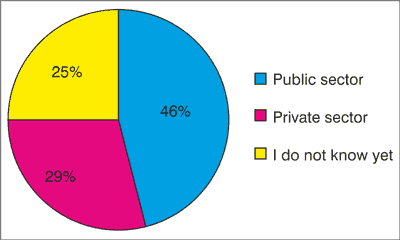
Fig. 9. In case of intended employment in Hungary, conception on the planned sector
72.4% (157 persons) of the students, both full- and part-time, intend to work in a field related to their profession. The proportion of students giving the “I do not know yet” answer is unfortunately high 21.7% (47 persons). However, the proportion of students who do not intend to work in the field of their current studies is low, only 6.0% (13 persons) (fig. 10).

Fig. 10. Students planning to work in a position matching their current studies
Table 4 summarizes students’ conceptions on their future work field divided by type of training and year.
Tab. 4. Students planning to work in a field matching their current studies by training type and year
| | Year |
| 1 | 2 | 3 | 4 |
| N | % | N | % | N | % | N | % |
| Part-time | Yes | 20 | 83.3% | 10 | 66.7% | 19 | 73.1% | 14 | 70.0% |
| No | 1 | 4.2% | 1 | 6.7% | 4 | 15.4% | 3 | 15.0% |
| I do not know yet | 3 | 12.5% | 4 | 26.7% | 3 | 11.5% | 3 | 15.0% |
| Total | 24 | 100.0% | 15 | 100.0% | 26 | 100.0% | 20 | 100.0% |
| | Number of missing values: 0 | Number of missing values: 0 | Number of missing values: 0 | Number of missing values: 1 |
| Full-time | Yes | 46 | 79.3% | 15 | 68.2% | 13 | 41.9% | 20 | 95.2% |
| No | 2 | 3.4% | 0 | 0.0% | 2 | 6.5% | 0 | 0.0% |
| I do not know yet | 10 | 17.2% | 7 | 31.8% | 16 | 51.6% | 1 | 4.8% |
| Total | 58 | 100.0% | 22 | 100.0% | 31 | 100.0% | 21 | 100.0% |
| | Number of missing values: 2 | Number of missing values: 0 | Number of missing values: 0 | Number of missing values: 0 |
Regardless of the training type, the proportion of students who intend to work in a field matching their current studies is very high among first-year students. Unfortunately, this proportion is lower in second- and third-year students; however, the majority of fourth-year students plan to work in a field matching their current studies.
The amount of part-time fourth-year students that planned to work in a field matching their current studies was lower than the amount of full-time fourth-year students.
Figure 11 shows the areas that students planning to work in a field matching their current studies (N = 156) were willing to choose. The highest number of the students surveyed (35.9%; 56 persons) would like to work in the Policy Administration Services of Public Health, 10.3% of students (16 persons) would choose the NÉBIH (National Food Chain Safety Office – NFCSO) and 20.5% of the students (32 persons) intended to work in the private sector. The proportion of uncertain students was relatively high (14.7%; 23 persons), and was almost equal to the proportion of students who planned to work in healthcare institutions (12.8%; 20 persons).
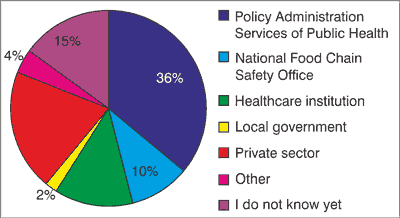
Fig. 11. Desired workplaces of students planning to work in a position matching their current studies
Table 5 depicts planned workplaces by training type and class. The Policy Administration Services of Public Health seemed to be the first choice for the full-time students. Healthcare institution and private sectors were the responses that part-time students and second-year students chose most frequently. Second-year students indicated private sector as the most preferred workplace, and only the third- and fourth-year students indicated Policy Administration Services of Public Health as their first choice.
Tab. 5. Students planning to work in a field matching their current studies by training type and year
| | Year |
| 1 | 2 | 3 | 4 |
| N | % | N | % | N | % | N | % |
| Part-time | Policy Administration Services of Public Healthcare institutions | 4 | 20.0% | 2 | 20.0% | 8 | 42.1% | 6 | 42.9% |
| National Food Chain Safety Office | 1 | 5.0% | 1 | 10.0% | 1 | 5.3% | 3 | 21.4% |
| Healthcare institution | 6 | 30.0% | 1 | 10.0% | 4 | 21.1% | 2 | 14.3% |
| Local government | 0 | 0.0% | 1 | 10.0% | 0 | 0.0% | 0 | 0.0% |
| Private sector | 5 | 25.0% | 3 | 30.0% | 5 | 26.3% | 1 | 7.1% |
| Other | 1 | 5.0% | 0 | 0.0% | 0 | 0.0% | 2 | 14.3% |
| I don’t know yet | 3 | 15.0% | 2 | 20.0% | 1 | 5.3% | 0 | 0.0% |
| Total | 20 | 100.0% | 10 | 100.0% | 19 | 100.0% | 14 | 100.0% |
| | Number of missing values: 0 | Number of missing values: 0 | Number of missing values: 0 | Number of missing values: 0 |
| Full-time | Policy Administration Services of Public Healthcare institutions | 15 | 32.6% | 5 | 35.7% | 6 | 46.2% | 10 | 50.0% |
| National Food Chain Safety Office | 5 | 10.9% | 2 | 14.3% | 2 | 15.4% | 1 | 5.0% |
| Healthcare institution | 4 | 8.7% | 0 | 0.0% | 2 | 15.4% | 1 | 5.0% |
| Local government | 2 | 4.3% | 0 | 0.0% | 0 | 0.0% | 0 | 0.0% |
| Private sector | 7 | 15.2% | 3 | 21.4% | 2 | 15.4% | 6 | 30.0% |
| Other | 0 | 0.0% | 1 | 7.1% | 1 | 7.7% | 1 | 5.0% |
| I don’t know yet | 13 | 28.3% | 3 | 21.4% | 0 | 0.0% | 1 | 5.0% |
| Total | 46 | 100.0% | 14 | 100.0% | 13 | 100.0% | 20 | 100.0% |
| | Number of missing values: 0 | Number of missing values: 1 | Number of missing values: 0 | Number of missing values: 0 |
Regardless of the training type, the proportion of students planning to work at the Policy Administration Services of Public Health increased continuously from the first year on. The same applies to the number of students that wanted to work the private sector. The higher the year, the lower the number of uncertain students.
The result analysis
Prior to the analysis of the results, we must disclose that filling in of the questionnaires took place between May and June for all the classes. Because of that, more persons from the early years of the curriculum took part in the study. There were more female students at the course at the time of the survey. There is no up-to-date data concerning the gender distribution of working health inspectors, however, it can be confirmed from the personal experience that there is indeed more women working in this profession.
Students’ conceptions concerning further studies
Regardless of the type of the training, altogether it can be stated that the intention of pursuing additional studies in a field related to the field of the current studies was strongly presented among the students. The preferred location of further studies for the majority of students is Hungary. It is remarkable that among full-time students surveyed – despite the fact that their knowledge of foreign languages is higher – only one person planned to study abroad, while the same was true for three persons among part-time students. One possible explanation for this low number of students interested in going abroad may be that the students do not have sufficient information concerning the possibilities of their career abroad and may have more knowledge on the work opportunities in Hungary. However, the questionnaire did not contain any questions deepening this issue. It can be regarded as positive that only 9 persons (7.9%) would like to continue their studies a different field and only 4 persons (3.5%) did not have definite conceptions on their further education. Also, from 114 persons who did not intend to study further, 101 persons were planning to work in their profession: it can be concluded from the answers that students intend to pursue diversified, multifaceted careers. Currently, according to the standards introduced with the Bologna system, the training of public health inspectors of the first degree BSc is conducted by the Health Care and Disease Prevention centers. For graduated students, the Public Health Master Degree training is considered to be the most probable direction of continuing their studies. Public Health Master training is offered by the University of Debrecen and the University of Pècs. University of Debrecen offers training in four specializations – public health inspector, epidemiology, environmental and occupational health and health improvement. University of Pècs offers training in three specializations – epidemiology, environmental and occupational health and health improvement (2). For students planning to pursue MSc training, the following specialties can be chosen: Social work in healthcare MSc, Complex rehabilitation MSc, Health psychology MSc (health improvement specialization), Nutritional science MSc, Health politics, planning and financing MSc training (2), as well as “related areas” such as environmental protection, quality assurance and food safety.
Regarding the form of the further studies planned, part-time students seemed to have more specific conceptions. At the time of the survey, it was clear that part-time students preferred the same form in their possible further studies. Results by type of training and years indicated that this issue was especially important for the fourth-year students.
Conceptions regarding work
It can be regarded as positive that more than half of the students surveyed, 70.2% (153 persons), and almost 100% of the fourth-year students, already have some idea about their desired area of employment. Only 5 full-time students and 11 part-time students declared that they had not thought about it at all, which may suggest that full-time students were more concerned about the future employment than part-time students. One of the reasons for this may be that part-time students generally already have a job. However, graduation is their first opportunity to decide about their first permanent job and its field. Providing adequate information about their possible careers, primarily addressed to the full-time students, is of paramount importance. This should be done by the career office and the coordination office.
The amount of students who planned establishing connections with their potential future workplace during their studies was almost the same as amount of students who had not decided about it yet. However, it must be underlined that part-time students planned establishing connection with their potential future workplace more often. We think that they sense and witness today’s harsh situation on the labor market, and/or try to select the best workplace available and are rather cautious about it. This result is also interesting, because the conclusions that can be drawn from it are contradictory to the results of the previous question, which suggested that full-time students were more concerned about their future workplaces. Therefore, it can be hypothesized that that while full-time students were more concerned about finding an appropriate workplace after they finish their studies, part-time students were more active when it comes to seeking employment.
Working abroad seems not to be a popular choice for public health inspector training students (72.8%; 158 persons) did not plan to work abroad). However, working abroad was a serious alternative for a significant percentage of the full-time students, as much as 40% of students of some years had not decided yet whether they wanted to go abroad or not. This percentage was significantly lower for part-time students. The following factors could have contributed to the results: having a family, insufficient language skills or current work. Part-time students seemed to be more decided about this matter than full-time students.
According to our survey, the motivation of students planning to work abroad was of primarily financial nature. The questionnaire also included “opportunity for professional improvement” and “practicing languages” answers, but none of the respondents chose any of these answers.
For the students intending to work in Hungary, state sector is the most desirable employer. One of the possible explanations for this is related to the present situation of the Hungarian labor market. State sector is perceived as more stable and long-term employer. Moreover, the possible workplaces in the state sector were always abundant (KÖJÁL network, National Public Health and Medical Officer Service), which, however, slowly changes due to the systemic changes.
The Decree 20/2009 (VI. 18.) of the Ministry of Health concerns the public health care, including the prevention of infections, minimum standards and supervision of the preventive measures taken (3). The act also specifies the role of the public health inspector in the preventive team for nosocomial infections.
The professional areas of “food safety” and “occupational health” had been translocated to two different authorities, which means additional employment opportunities in the state sector for the public health inspector. Moreover, thanks to the political changes, more workplaces in the private sector are available as well in the fields of insurance, pharmacology and other branches of the industry (including light industry and food industry) (4). It can be regarded as promising that 72.4% of students planned to seek employment in their profession after graduation. The percentage of students that were certain that they intended to work in another field was very low – 6% or 13 persons.
The majority (35.9% or 56 persons) of those planning to seek employment in an area matching their current studies would prefer to work at the Policy Administration Services of Public Health (currently: Government Office). Therefore, it can be concluded that even today, the public sector employment remains attractive to the public health students regardless of training type and year. As the vast majority of our respondents chose the Policy Administration Services of Public Health, National Food Chain Safety Office, healthcare institutions or local governments as their first career choice, the predominance of state sector can clearly be seen.
Conclusions
At the time of the survey, a decisive proportion of the students of the public health on the Semmelweis University, Faculty of Health Sciences studying intended to study further in an area connected to their current studies’ field and in Hungary. More than half of the students who planned further studies planned to do it on the MSc level.
More than half of the students surveyed (70.2% or 153 persons) and almost all of the fourth-year students already had had ideas regarding the area of their future employment. Full-time students were more concerned about their future employment than part-time students. This is supported by the fact many students planned to establish connections in their future workplace, and almost the same amount of students were uncertain about it yet. A greater proportion of part-time students planned to establish connections with their future workplace, which can suggest that they presented a more active, prudent and practical approach than full-time students.
Few students surveyed planned to work abroad, and their motivation is primarily financial.
Public health inspector students who wanted to stay in Hungary planned to work mainly in the state sector. 72.4% of the students planned to work in the profession matching their current studies after their graduation.
The Policy Administration Services of Public Health (currently: Government Office) was the most popular choice for students who were planning to seek employment in the area matching their current studies (35.9%; 56 persons).
Piśmiennictwo
1. Semmelweis Egyetem Egèszsègtudományi Kar Tanulmányi osztály. 2. Róza A: A nèpegèszsègügyi kèpzès ès szakember ellátottság helyzete Magyarországon. Nèpegèszsègügy 2012. 90 èvfolyam 2. szám 98. 3. 20/2009. (VI.18.) EüM rendelet. Az egèszsègügyi ellátással összefüggő fertőzèsek megelőzèsèről, e tevèkenysègek szakmai minimumfeltèteleiről ès felügyeletèről. http://net.jogtar.hu/jr/gen/hjegy_doc.cgi?docid=A0900020.EUM (2015.07.15.) 4. http://www.se-etk.hu/magyar/oktat/bsc/gondozas.pdf (2015.07.23.)










